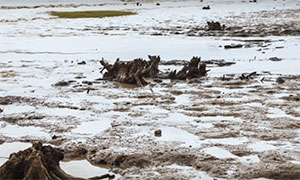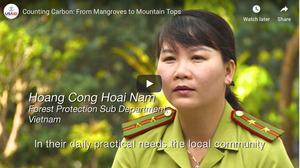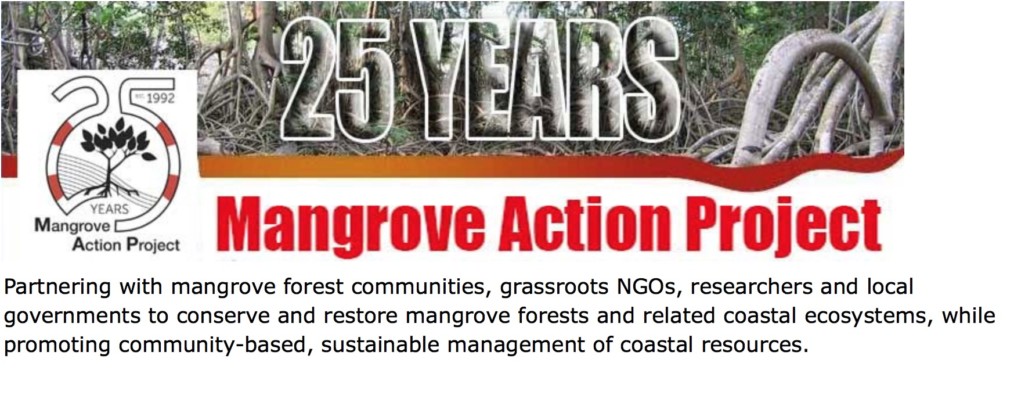|
The MAP News
469th Edition May 25, 2019 |
|
FEATURE MAP’s Community Based Ecological Mangrove Restoration in Rufiji Delta MYANMAR - The hugely important Rufiji Delta has the largest expanse of mangrove forest in East Africa but are being heavily degraded from agriculture development and deforestation. These workshops found sustainable conservation solutions and scenarios for the declining coastal forests with local communities. Mangrove restoration is not just planting one or two mangrove species in straight lines – it’s much more complex than that. To demystify this, Mangrove Action Project (MAP) and Wetlands International Africa (WI) undertook a Community-Based Ecological Mangrove Restoration (CBEMR) training for 28 participants in Kibiti, Rufiji Delta, Tanzania. All too frequently, restoration projects move straight into building a mangrove nursery and planting before understanding the issues related to the project site. These projects often fail. CBEMR supports a holistic, science-based approach that encourages practitioners to mitigate mangrove stressors and facilitate natural mangrove regeneration. This is achieved by working with the local communities to understand all social and technical challenges affecting the restoration site, including site hydrology, soil elevation relative to sea level, pressures on the mangroves and why a site is not naturally regenerating. CBEMR avoids the costs and necessity of building a nursery and planting, as natural regeneration encourages all the species in the locality to find their appropriate sites. CBEMR is an adaptable process, allowing mangrove workers to take on all sorts of different challenges, such as very high salinity in the Saloum Delta, Senegal; grazing pressure in Rakhine State, Myanmar; or encroachment for rice farming within the Rufiji Delta. READ MORE AMERICAS Mangrove Training for the Guianas, in Coronie, Suriname REPUBLIC OF SURINAME - Popped over to Suriname, NE South America, on behalf of Mangrove Action Project to help WWF run some mangrove training for the Guianas. First stop, Eco Resort Inn, Paramaribo. Then NW along the coast to the training venue in Totness, Coronie region. First event was the 'Marvellous Mangroves' programme, run by the irrepressible Martin Keeley (MAP), a kids education programme. This group were some excellent students from the university in Suriname. Lots of activities, ecology, talks and a visit to the Coronie mangrove education centre including an interesting exercise at the start of a field trip where the students had to close their eyes and tune-in to (and draw) the soundscape of the coast. Lots of challenges along this coast, including impounding of water by dyke building which killed off mangroves, goats and epic erosion. READ MORE AFRICA Earth observation data offers hope for Africa's wetlands 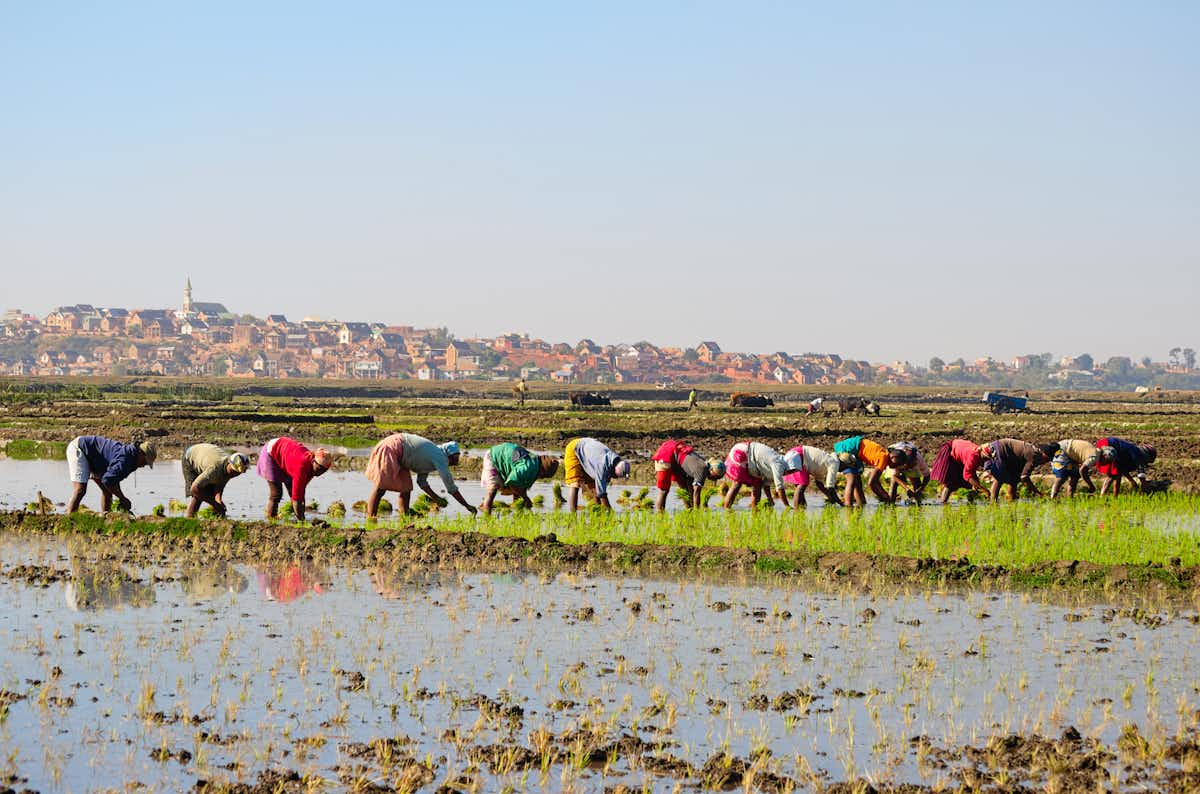 AFRICAN CONTINENT - Wetlands support millions of people around Africa. They include all areas that are permanently or frequently covered by water, and could be at the edge of a lake or the mouth of a river. Wetlands offer a source of freshwater, fisheries, moist soil for farming and wild plants for food, construction and medicinal uses. They also help to control floods, maintain rivers in dry seasons, recharge groundwater and purify water. But despite their importance, they remain among the most threatened ecosystems in the world. Between 1970 and 2015, inland and coastal wetlands both declined by about 35% globally. Thats three times the rate of global forest loss. This is a huge loss to important flora and fauna and a critical loss to the many people who relied on them for their livelihoods. In Africa, three things contribute to the decline of wetlands: growing populations, economic development and climate change. READ MORE Mangrove forests trap floating litter  SAUDI ARABIA - Mangrove forests on the coasts of Saudi Arabia act as litter traps, accumulating plastic debris from the marine environment, according to new research from KAUST. The study offers an explanation for the fate of missing marine plastic litter and highlights the threat it poses to coastal ecosystems. "Of all the plastic discarded in the marine environment globally, only 1 percent is found floating in surface waters. That means that 99 percent of the plastic is elsewhere, but yet we don't know where exactly," says Cecilia Martin of KAUST's Red Sea Research Center. In previous work, Martin and others in Carlos Duarte's research group, found relatively low levels of plastic litter in the Red Sea. Next, to identify the location of this missing litter, the team used an unmanned aerial vehicle to scour the beaches. The team's analysis showed that the density of debris depends on the distance to major maritime traffic routes rather than land-based factors, such as the distance to the nearest city. Traffic further from the coast caused less litter accumulation, but only up to a certain distance. Unexpectedly, litter density began to increase again once the traffic was more than 15km away, which the researchers propose is due to currents transporting the litter to mangroves. READ MORE ASIA Harvesting honey saves forests and lives  THAILAND - The coastal villages of SW Thailand were once home to thriving mangrove forest ecosystems that preserved the shoreline, sequestered carbon, sheltered fish, and sustained communities that relied on small-scale inshore fishing. Today, these communities are among the poorest in the region as mangroves are lost to aquaculture, logging, and urban expansion. MAP will help 4 communities develop sustainable sources of mangrove-based income through harvesting high-quality honey from mangrove flowers. Coastal villages on the Andaman Sea in Southern Thailand are feeling the impacts of climate change, coastal deforestation and over-fishing. At least half of all mangrove forests in Thailand have been destroyed, and this has led to poverty, land degradation, loss of resource-based livelihoods, and deterioration of subsistence fisheries. This project will affect more than 300 coastal villagers working to reclaim local resources and livelihoods that will allow them to restore their mangroves. Since 2014, MAP has been collaborating with Ban Nai Nang to generate new income while restoring their mangrove forests. Today 45 beekeeping families, who would normally depend on small-scale fishing, are empowered, producing +300kg of honey per year and value-added products such as hand soaps, shampoos and balms. They want to pass on their expertise to 4 other communities, creating a sustainable network to share skills and knowledge. READ MORE On Java’s Coast, a Natural Approach to Holding Back the Waters  INDONESIA - In the meeting hall, village leaders discussed the plight of their community and remembered the old days, before the water came. The village of 3,500 people had been on a prosperous, rice-growing river delta, famous for its fertile soils and protected from the ocean by a wide belt of mangroves. “I grew up in the 1960s when the sea was more than a mile away,” said Slamet, a fisherman. “Then the flooding began.” Beside him, the community activist Mat Sairi admitted that the village had made mistakes back then. Like almost every other coastal community in the area, they had wanted to make money by raising prawns and milkfish. So they converted their rice fields into ponds and began cutting down the mangroves along the shore to make more. “Our parents warned us that we should protect the mangroves,” he remembered. “They said the mangroves provided many benefits, like the oysters, crabs, and fish among their roots, as well as protection of the coastline. But our people wanted to make money and feed their families.” READ MORE The Bridge Between Land and Sea  SRI LANKA – Sri Lanka is establishing itself as a world leader in mangrove restoration. Around two thirds of Sri Lanka’s population live in coastal areas, and many communities depend on mangroves for their livelihoods. Vositha Wijenayake, executive director of SLYCAN Trust, puts it like this: “Mangroves provide various ecosystem services to local communities and are often essential for their livelihoods by providing resources and fishing grounds. They are also critical component of ecosystem-based adaptation in the coastal areas of Sri Lanka, to build resilience to climate risks and impacts.” Over the last century, and especially the last few decades, enormous areas of Sri Lanka’s mangrove forests have been destroyed in state-sanctioned enterprises: to make room for shrimp farms, construction of roads, salterns, factories, tourist attractions, and expanding human settlements. Industrial pollution, resource extraction, and the country’s 26-year civil war have taken a toll as well. READ MORE Bangladesh’s Tigers Bounce Back After a Poaching Crackdown  BANGLADESH - DEEP IN THE SUNDARBANS IN southwestern Bangladesh, one of the world’s largest mangrove forests saw its tigers disappear at an alarming rate. The population of big cats had begun to disappear at the turn of the 21st century, snatched by poachers and pirates who snuck their way into the wildlife sanctuary in search of tiger skin. But a recent effort to double down on illegal poaching has allowed the population of Bengal tigers in the Sundarbans to increase for the first time in 15 years, according to a new tiger census released on May 21, 2019, the Dhaka Tribune reports. Split between Bangladesh and India, the Sundarbans mangroves spread their roots throughout 4,000 square miles in the Bay of Bengal, according to National Geographic. It is the largest mangrove forest in the world, and the only one occupied by tigers. In its prime, the forest was a labyrinthine, waterlogged jungle, almost impenetrable to humans—in other words, the perfect place to be an endangered animal. READ MORE ‘Tiger widows’ struggling to survive defy stigma  BANGLADESH - Sundarbans, a lush green UN world heritage site spread over 7,700 square miles of mostly swamp between Bangladesh and India, every villager who is a honey collector or fisherman has a tragic tiger story to share. Cyclone, heavy rainfall, and the tidal wave hits almost every year and affects the people, damages their houses and crops, increase their sufferings which make them poor/ultra-poor. According to a local development organisation, nearly 1,500 “tiger-widows” are now living in the areas close to the Sundarbans fighting against poverty, climatic disaster risks and social stigma. Our visit, We also found many women who lost their husband by tiger attacks and battling to survive defy stigma like ‘Tiger Widows’ of Sundarbans in Bangladesh. READ MORE PWD puts up railings at Vashi to stop debris dumping around mangroves  INDIA – The state public works department (PWD) has started erecting iron railings along the Sion-Panvel highway at Vashi to protect mangroves from damage caused by the widening of the road. On April 14, HT had reported about the lack of precautionary measures taken to protect these mangrove trees as soil and debris were dumped on the mangrove area, affecting the greenery. Prakash Chaudhary, range forest officer of Navi Mumbai mangrove cell, said, “We had also written to the PWD complaining about violations made by their people in March. We are glad they are doing something about it now.” A PWD official on Wednesday said the move to put up the railings was taken after the matter was brought to their notice. “The work was started last week and will be finished by this weekend. We are covering an area of three kilometres, starting from the Vashi toll naka,” he said. “We have instructed our labourers to put the soil in such a way it doesn’t cross the railings.” READ MORE EUROPE Islands of nature in a sea of decline – indigenous contributions key to saving the world’s nature  FRANCE - Nature is decreasing worldwide at an alarming rate – it is time to look to indigenous peoples to help find the solution. This was one of the key conclusions reached in the first global assessment of nature and biodiversity, released in Paris. "We are at a historical crossroads for humanity,” said Cristiana Paşca Palmer, UN Assistant Secretary-General and Executive Secretary of the UN Biodiversity Convention, speaking in Paris this week at the closing of the IPBES 7 plenary session. In the largest and most comprehensive attempt to assess the state of our living planet, governments, scientists, civil society and indigenous peoples and local communities came together at IPBES7 and agreed that we are exploiting nature faster than it can renew itself. “This report shows that our global home is under threat, and nature is in decline,” said Aroha Te Pareake Mead, who attended IPBES 7 as a member of the International Indigenous Forum on Biodiversity and Ecosystem Services (IIFBES). “This decline is driven by a predominant economic and political system that favours increasing consumption and growth over living in harmony with nature,” she added. “If we can adopt a global political model that focuses on the concept of kaitiakitanga (guardianship) we might still have a chance to save our planet and all of its biodiversity” said Te Pareake Mead. Traditional knowledge is key in understanding nature. READ MORE |
UPCOMING EVENTS
|
Mangrove Action ProjectClick here to view past newsletters |
|
Search News Archive
Saturday, May 25, 2019
MAP News Issue 469 - May 25, 2019
Thursday, May 9, 2019
MAP News Issue 468 - May 11, 2019
|
The MAP News
468th Edition May 11, 2019 |
|
FEATURE Editor's Note: Expansion of the palm oil industry is affecting mangrove forest and coastal zones as well. MAP is noticing the rapidly growing oil palm industry converting coastal lands, including former mangrove sites that were previously cleared for shrimp farming, but then abandoned as shrimp disease and pollution closed the shrimp production ponds. Too often, rather than allowing the abandoned shrimp pond sites to be restored to mangroves, the oil palm entrepreneurs are moving onto these sites and converting them for the fast moving industry, thus eliminating the potential to restore such sites to productive mangrove wetlands. Oil palm expansion in the Philippines leading to illegal deforestation and rights violations
PHILIPPINES - In the province of Palawan, indigenous communities and civil society have denounced illegal clearing of pristine forests and indigenous rights violations by oil palm companies. Palawan, the Philippines’ westernmost province and known as the country’s last ecological frontier, is a UNESCO Biosphere Reserve, which requires the province to promote a mix of conservation and sustainable development in dialogue with local communities. However, indigenous leaders and activists who have spoken with IDM tell a story that is far from this ideal. In its latest annual bulletin, the Coalition Against Land Grabbing (CALG), a local collective of indigenous peoples affiliated with the Global ICCA Consortium, said that oil palm companies have violated environmental, health and safety laws and regulations, as well as indigenous peoples’ rights. “Oil palm is destroying Palawan’s forests, encroaching on ancestral domains and, increasingly, threatening the indigenous peoples’ food security,” the NGO said. Oil palm companies operating in the province include Palawan Palm & Vegetable Oil Mills Inc (PPVOMI), a Singaporean-Pilipino joint venture that sells all its production to its sister company Agumil Philippines Inc (AGPI). CALG told IDM that information it has obtained from industry sources reveals that kernel and crude palm oil are being shipped from Palawan to refineries in Sabah, Malaysia, and that 70 percent of the total production is exported to Singapore, China and Malaysia. This bluntly contrasts with the government’s initial commitment to produce healthy and cheap palm oil for local consumption. READ MORE AFRICA The fate of unique species in Tanzania’s coastal forests hangs in the balance 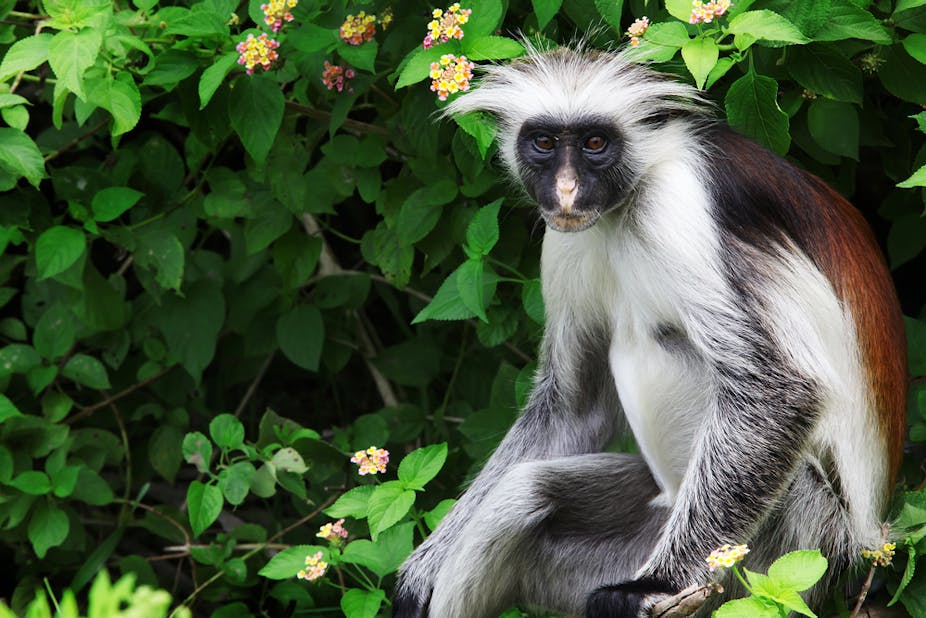 TANZANIA - Tanzania is known for its tapestry of lush forests, expansive grasslands and tropical beaches, and abundant and diverse wildlife. Its coastal forests are part of the Coastal Forests of Eastern Africa biodiversity hotspot – a place recognized for its wealth of wildlife but threatened with destruction, making it a high priority for conservation efforts. These forests are home to hundreds of endemic plant and animal species – ones that aren’t found anywhere else in the world. For example, there are five endemic mammals – including the Zanzibar Red Colobus – five endemic birds, six endemic amphibians and three endemic reptiles, as well as 325 endemic plants. More than 300 other species are shared only with the nearby Eastern Arc Mountains. In our paper we found that biodiversity – and the level of endemic species – is exceptional by global standards. READ MORE ASIA Editor's note - This is the reason why farmers will keep planting more oil palm ......artificial incentives. The environment loses, mangroves may suffer, more abandoned shrimp ponds planted into oil palm instead of being restored to mangroves & the consumer pays more for electricity. Ministry speeds up palm oil plan  THAILAND - The Energy Ministry is speeding up a plan to purchase a new block of 200,000 tonnes of crude palm oil after the cabinet acknowledged the measure on Tuesday. Energy Minister Siri Jirapongphan said the first batch, totalling 100,000 tonnes, should be purchased within 15 days. The state-run Electricity Generating Authority of Thailand (Egat) has been ordered to buy 200,000 tonnes of crude palm oil. It will pay for the first volume to extract oil within seven days. "Egat will announce other details on its website," Mr Siri said. He said the Commerce and Interior ministries will start to check the stock of crude palm oil within two weeks. Egat will invite owners of oil extraction plants to propose their sale prices next Wednesday. "The first shipment is expected to start from May 20," Mr Siri said. READ MORE Why Myanmar villagers still engage in illegal logging of mangroves  MYANMAR - In Myanmar, mangroves have disappeared at an unprecedented clip. The rate of deforestation in the country is the highest in Southeast Asia, according to research published in the Proceedings of the National Academy of Sciences in 2016. U Htay Lin, secretary of the Mangrove Service Network, an environmental organization based in Yangon, Myanmar’s commercial capital, estimates that only 20 percent of the mangroves in the Irrawaddy Delta remain; most have been cleared for aquaculture or rice paddy fields. Those that survive are in forest and wildlife reserves near the city of Bogale — just a three hour boat ride from Chaungbyaegyi. To save the remaining mangroves, the Myanmar government issued a logging ban in 2014. Despite that, illegal logging persists. One sentiment that I heard repeatedly from villagers who live outside the towns in the delta is that they need mangrove wood to survive. To understand how most people in the Irrawaddy live, and why illegal logging of mangroves persists, I decided to follow U Khin Win and U Tin Hla into the mangrove forest. READ MORE Controversial aquaculture projects threaten Myanmar’s remaining mangroves  Myanmar - Myanmar has lost 80 percent of its original mangrove cover; much of what remains is located in the southern province of Tanintharyi. But in addition to illegal logging of mangroves for charcoal and firewood, aquaculture is a recent development that also threatens mangrove ecosystems. A few years ago, a businessman named U San Maung obtained approximately 200 hectares (500 acres) of land in Kala. He bought much of the forest land from nearby villagers and razed the remaining mangrove forest. U San Maung had plans to develop it into an aquaculture facility to produce shrimp to be sold to Thailand, where seafood fetches a higher price than locally. Since shrimp farming and aquaculture require saltwater — and mangroves grow in regions where saltwater and freshwater meet — opportunities for profit often conflict with ecological resources. Mangroves in other areas of Myanmar such as in the Irrawaddy Delta and western Rakhine state have been cleared for aquaculture, but the development of a shrimp farm in the southern province of Tanintharyi is new. READ MORE In Indonesia, bigger catches for a fishing village protecting its mangroves  INDONESIA - Here in West Kalimantan, one of 34 provinces in the world’s largest archipelagic nation, mangrove forests occupy approximately 1,000 square kilometers (386 square miles) and are home to around three-quarters of all Indonesian mangrove species. Mangrove cover remains fairly thick in Kubu Raya, the coastal district south of the provincial capital, Pontianak, where you find the Nibung River. But the distinctive trees with their above-water breathing roots have faced sustained pressure in Sungai Nibung due to settlement building and demand for firewood. In other nearby villages, mangrove dieback has proved extensive. Anecdotal reports indicate fishermen there are struggling. In 2017 the Sungai Nibung village government began closing tributaries to any extractive practices. The closure was decided after consultation with the village’s natural resources co-op, the forest management office, fishermen and Planet Indonesia. The local government established patrol teams to monitor and enforce the moratorium. On one occasion, a patrol arrested someone from a nearby village, but decided to let them go without sanction. “Maybe they didn’t know,” says Planet Indonesia’s Riyansyah. “But now they do know about the open-close system, the news should spread.” READ MORE The Tough Sell of Turtle-Saving Tech 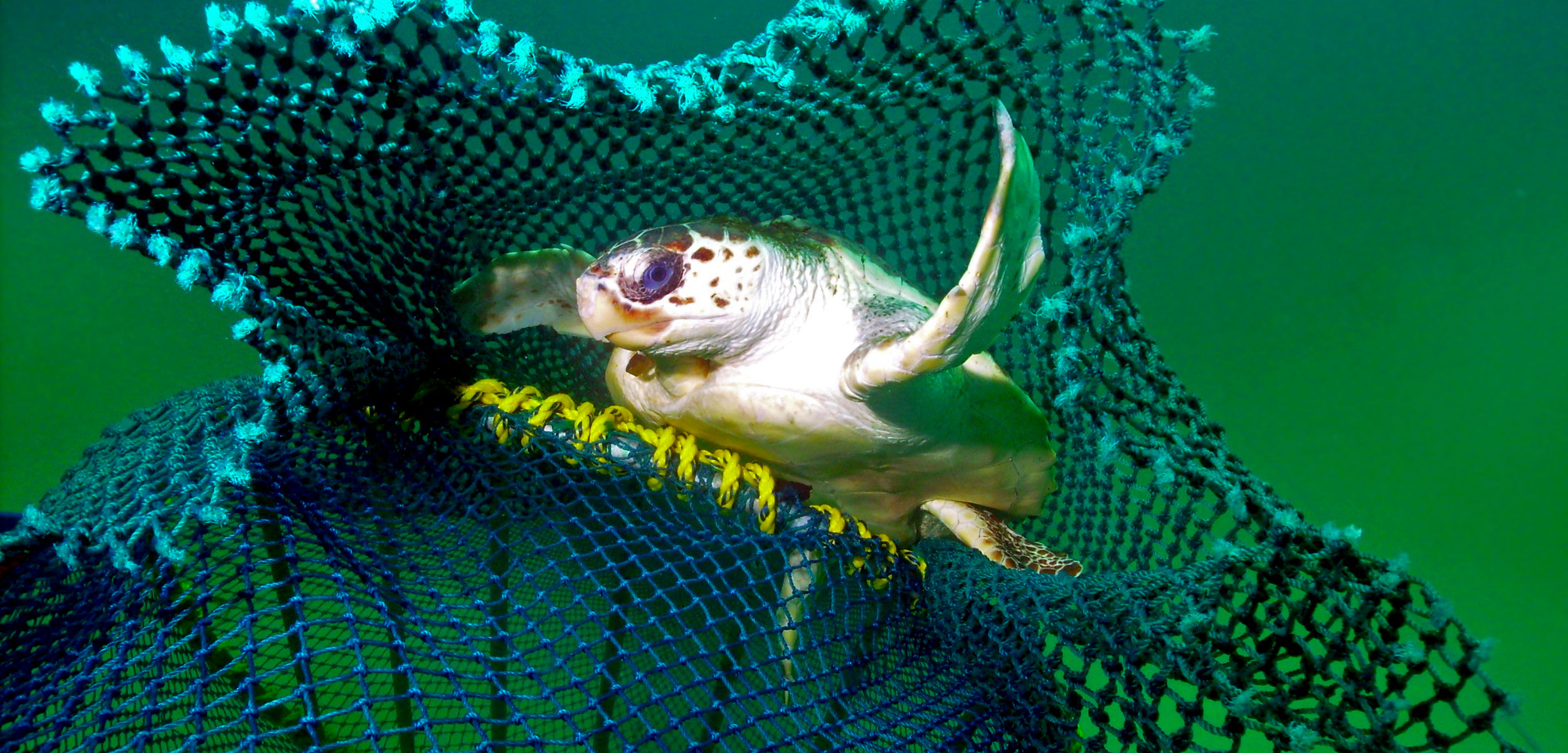 MALAYSIA - Sea turtle excluder devices are simple. Getting them adopted is anything but. Fisherman Firman bin Jawasa remembers the catch well. He was 20 years old and trawling for shrimp with his uncle in the coastal waters off northern Borneo, Malaysia, when something in their heavy net started thrashing. Caught inside was a frenzied sea turtle, snapping at the net. The turtle was too difficult to handle so they left the net in the water hoping the meter-long creature would escape. Soon after, to Firman’s relief, the turtle bit through the net and fled. Eighteen years later, Firman is now the captain of his own shrimp trawler. In 20 years of fishing he says he has caught only that one turtle, but a 2007 survey of fishermen in his home state of Sabah suggests that each year almost 4,500 turtles accidentally drown in shrimp trawler nets. Sea turtles are protected in Malaysia, and the law prohibits harming or keeping them without permits. Eager to avoid any hassle, most fishermen don’t report by-catch, so it’s almost impossible to know exactly how many turtles die in this way.READ MORE AMERICAS Humans Are Speeding Extinction and Altering the Natural World at an ‘Unprecedented’ Pace  U.S. - Humans are transforming Earth’s natural landscapes so dramatically that as many as one million plant and animal species are now at risk of extinction, posing a dire threat to ecosystems that people all over the world depend on for their survival, a sweeping new United Nations assessment has concluded. As a result, biodiversity loss is projected to accelerate through 2050, particularly in the tropics, unless countries drastically step up their conservation efforts. Humans are producing more food than ever, but land degradation is already harming agricultural productivity on 23 percent of the planet’s land area, the new report said. The decline of wild bees and other insects that help pollinate fruits and vegetables is putting up to $577 billion in annual crop production at risk. The loss of mangrove forests and coral reefs along coasts could expose up to 300 million people to increased risk of flooding. “It’s no longer enough to focus just on environmental policy,” said Sandra M. Díaz, a lead author of the study and an ecologist at the National University of Córdoba in Argentina. “We need to build biodiversity considerations into trade and infrastructure decisions, the way that health or human rights are built into every aspect of social and economic decision-making.” READ MORE These Scientists Did More Than Tell Us We Were Doomed  U.S. - "Coastal marine ecosystems are among the most productive systems globally, and their loss and deterioration reduces their ability to protect shorelines, and the people and species that live there, from storms, as well as their ability to provide sustainable livelihoods (well established).” Wetlands, in particular, are also fantastic at sequestering carbon from the atmosphere. Protecting these landscapes would probably mean protected status for landscapes like coastal mangrove forests and an end to beachfront resorts and industrial development on the coastline. It could also lead to helping coastlines and wetlands rewild themselves before hurricanes come along and do it by fiat, with a lot more property damage.At several points in the summary, the IPBES describes “ever-increasing material consumption” as a concept that is incompatible with leading a good life in the future. Instead, they say, addressing inequality, lowering consumption, expanding access to education, and supporting sustainable technology are our best bet for relieving the pressures that lead to illegal logging, poaching, overfishing, and generally living beyond our means. READ MORE GLOBAL Islands of nature in a sea of decline – indigenous and local knowledge, action and contributions key to saving the world’s nature 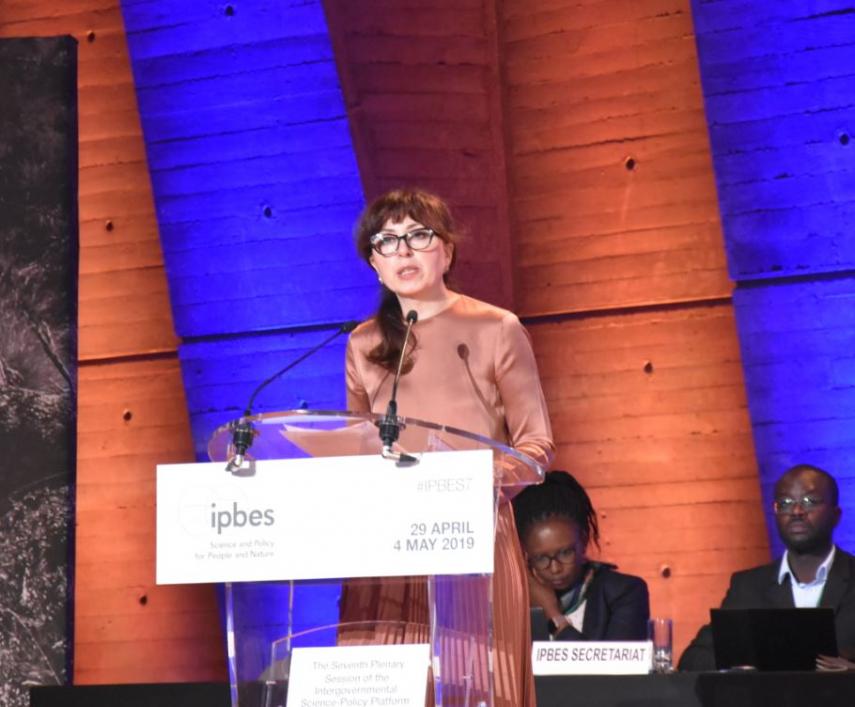 GLOBAL - Nature is decreasing worldwide at an alarming rate – it is time to look to indigenous peoples to help find the solution. This was one of the key conclusions reached in the first global assessment of nature and biodiversity, released today (6 May) in Paris. "We are at a historical crossroads for humanity,” said Cristiana Paşca Palmer, UN Assistant Secretary-General and Executive Secretary of the UN Biodiversity Convention, speaking in Paris this week at the closing of the IPBES 7 plenary session. “We are counting on everyone everywhere and especially indigenous peoples & local communities who are closest to the land, whose survival is most at risk, and whose traditional knowledge and practices can show us all the way forward," she said.The report shows that the situation of global nature looks dire, but there are glimmers of hope that could lead to a reverse in this trend. Scientists, governments and civil society agree – the answer lies in knowledge, both in ‘traditional’ science and also with knowledge generated by indigenous peoples and local communities, who have safeguarded nature for millennia. “The combination of scientific evidence and indigenous and local knowledge makes this report much richer,” said Anne Larigauderie, executive secretary of IPBES. In the largest and most comprehensive attempt to assess the state of our living planet, governments, scientists, civil society and indigenous peoples and local communities came together at IPBES7 and agreed that we are exploiting nature faster than it can renew itself. READ MORE LAST WORD Dear Mr. Alfredo Quarto I am contacting you to mark World Migratory Bird Day 2019, which will take place on Saturday May 11, 2019. The purpose of this day is to show the importance of migratory birds, the threats they face and how to protect them and their habitats. For this occasion, we have created a set of open source resources available in www.connect2earth.org. The theme this year is dedicated to #StopPlasticPollution #WorldMigratoryBirdDay. We encourage you to regularly visit the website # Connect2Earthto find more resources for other open source prepared theme days, as the next International Biodiversity Day or World Environment Day. # Connect2Earthis a global campaign designed to spread the message about why #NatureMatters. When creating resources for different theme days throughout the year, WWF helps expand communications global biodiversity, increase awareness of the values of biodiversity and inform people about the steps they can take to conserve and use it sustainably. Open source resources have been made possible by the generous support of the German Federal Ministry for the Environment, Nature Conservation and Nuclear Safety with funds from the International Climate Initiative (International Climate Initiative - ICI). Please do not hesitate to contact if you have questions. Thanks in advance! Sincerely, Nina Gabrych International Biodiversity Project Manager Communication and Policy WWFGermany Reinhardtstr. 18 10117 Berlin Tel .: +49 (0) 0 30,311,777 Direkt: +49 (0) 30311777217 Nina.Gabrych@wwf.de Project info: Scaling up Biodiversity Communication for Achieving Aichi Target 1 (Summary - https://bit.ly/2Trug6t). IN MEMORIAM  Dr. Lew Young I am very sad to hear of Lew's passing, and wish to offer our deep condolences for this loss, for he was a wonderful person and devoted ecologist. I will always remember him from my infrequent visits to Mai Po reserve in Hong Kong! He will be sorely missed! ~Alfredo Quarto MAP The Ramsar Secretariat is deeply sad to announce that Dr. Lew Young passed away on 5th March 2019 while on mission in Beijing in his capacity of CEO of the East Asian-Australasian Flyway Partnership. He was 60 years old. READ MORE Back to Top |
UPCOMING EVENTS
|
Mangrove Action ProjectClick here to view past newsletters |
|
-
The community of adults and youth in Cayman Islands has come together recently to release a series of educational videos. Each is geared to...
-
By Alfredo Quarto, Program & Policy Director Co-founder, MAP There is a rather urgent situation concerning the bio-invasion of the Son...
-
By: Isabel Robinson, MAP Volunteer Intern Some months ago I decided to come to Thailand and do an internship in mangrove conservation, ...
MAP News Issue #596 = April 20, 2024
ENTRIES NOW OPEN! Mangrove Photography Awards 2024 10 Years Celebrating Mangroves GLOBAL - MAP has launched our 10th Mangrove Photograp...




